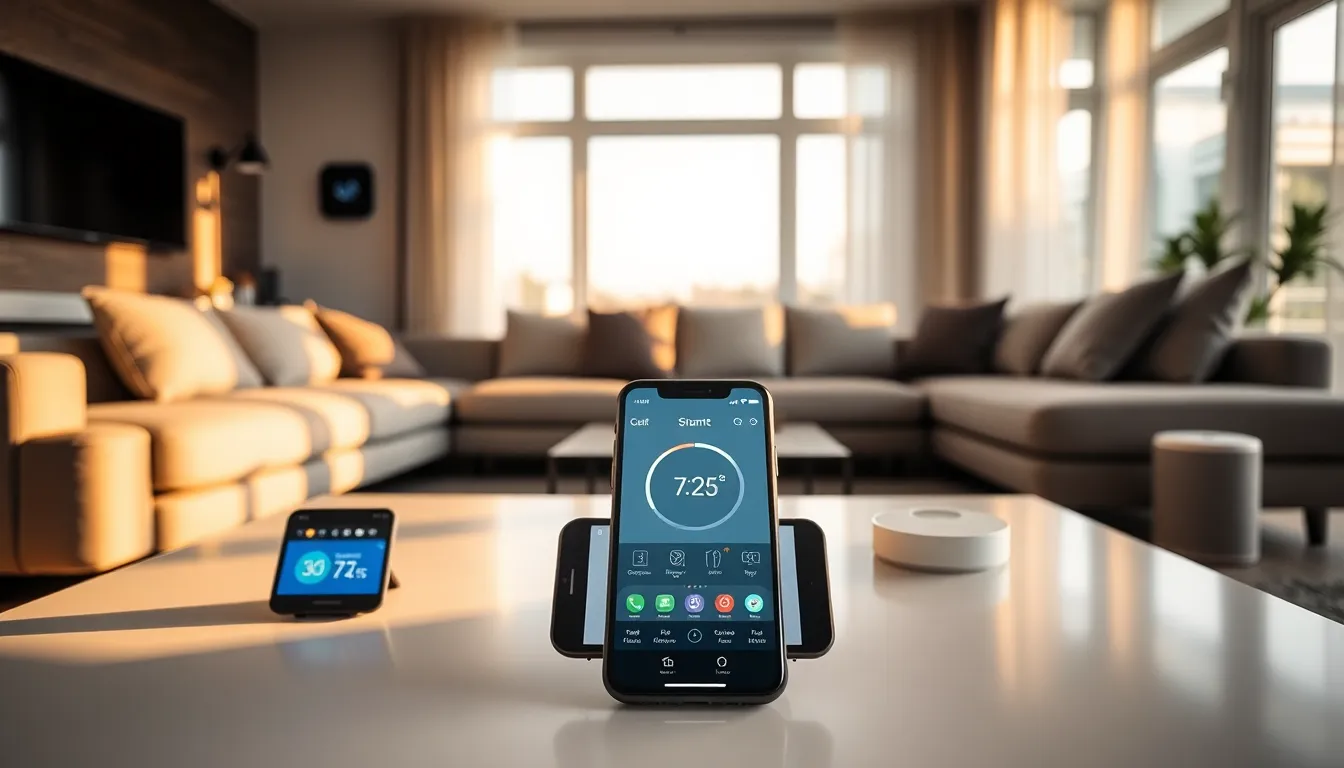Table of Contents
ToggleImagine a world where you can control every aspect of your home with just a tap on your smartphone or a command to your voice assistant. Sounds like magic, right? Well, welcome to the era of home automation networking. In a time where technology stalks us from the moment we wake, harnessing the power of home automation can lead to increased convenience and security. But, let’s face it, navigating this tech-savvy terrain can feel like trying to assemble IKEA furniture without the instructions. Fear not. In this guide, we’ll unravel the mysteries of home automation networking, paving your way towards a smarter, stylish, and more efficient living space.
Understanding Home Automation

Home automation refers to the system that allows the remote management of home appliances and systems via various technologies. It’s not just about turning your lights on and off from your phone. Oh no. We’re talking smart thermostats, security cameras, and even kitchen appliances that can practically cook dinner without you lifting a finger.
At its core, home automation networking simplifies your life. With interconnected devices communicating seamlessly over a network, users can control everything from their smartphones or voice-activated assistants. This technology utilizes Wi-Fi, Bluetooth, Zigbee, and Z-Wave protocols to create an integrated living experience.
Imagine arriving home after a long day and having your lights automatically dim, your thermostat adjust to the perfect temperature, and your favorite playlist start playing, all without you lifting a finger. Understanding these systems can transform not just how you interact with your home but can also enhance lifestyle in ways you never thought possible.
Key Benefits of Home Automation Networking
Home automation networking brings a treasure trove of benefits. From enhanced security to energy efficiency, it’s like having a personal assistant at your beck and call.
- Convenience: With automation, tasks that once required time and effort can now be executed with a simple command or touch. No more stumbling around in the dark searching for the light switch.
- Energy Efficiency: Smart thermostats and lights adjust automatically based on your habits. This leads to reduced energy bills and a smaller carbon footprint.
- Enhanced Security: Automated security systems allow homeowners to monitor their property remotely. Features like motion sensors, surveillance cameras, and smart locks provide peace of mind.
- Customization: Tailor your home environment to suit your lifestyle. From setting schedules for your lights to creating specific moods through color-changing bulbs, you are in control.
- Increased Property Value: Homes with automated features often see increased market value. Buyers are increasingly interested in smart home capabilities, making automation a valuable investment.
Types of Home Automation Networks
Diving into home automation networks reveals an array of options, each with its own merits. The major types include:
- Wired Networks: This involves hardwiring your home with electrical cables. While it may require more upfront investment and installation effort, it provides reliable and fast connection speeds.
- Wireless Networks: More popular among homeowners for their convenience, wireless networks support various protocols like Wi-Fi, Zigbee, and Z-Wave. These allow for more flexibility and ease of installation.
- Hybrid Networks: As the name suggests, hybrid networks combine both wired and wireless elements, maximizing reliability and flexibility. They cater to various devices across your home while maintaining efficient performance. These options ensure a foundation for your automation system, allowing devices to communicate effectively.
Setting Up Your Home Automation Network
Setting up a home automation network can feel like orchestrating a symphony, but it’s easier than it seems. Here’s a step-by-step guide:
- Assess Your Needs: Start by identifying areas you want to automate. Lighting, security, heating, and entertainment are all popular choices.
- Choose a Ecosystem: Decide on an ecosystem. Options include Google Home, Amazon Alexa, or Apple HomeKit. Each has its unique features and compatible devices.
- Select Devices: Purchase your smart devices based on compatibility with your chosen ecosystem. Be sure to check reviews and ratings to avoid buyer’s remorse.
- Installation: Follow the manufacturer’s instructions for setting up each device. Most modern smart products are user-friendly, often requiring just a smartphone app.
- Integration: Ensure all devices connect to your home network. You may need to adjust settings for optimal performance.
- Customization: Once integrated, personalize your settings through automation routines. This could include scheduling your lights to turn on and off at specific times.
Common Challenges and Solutions
Like any technology, home automation networking can present challenges. But, knowledge is power and solving issues is often straightforward.
- Compatibility Issues: Not all devices work together seamlessly. Choose products from the same ecosystem whenever possible to minimize headaches.
- Network Stability: A weak Wi-Fi signal can hinder performance. Position your router centrally and consider Wi-Fi extenders if needed.
- Security Concerns: With technology comes risks. Always change default passwords, update firmware regularly, and apply security features to protect your network from unauthorized access.
- Setup Confusion: Initial installation may feel daunting. Refer to online tutorials or manuals for step-by-step guidance. Many manufacturers also offer customer support for troubleshooting.
The Future of Home Automation Networking
The future of home automation networking looks incredibly promising. As technology progresses, expect greater integration, intelligence, and security.
- AI Integration: Artificial intelligence will transform home systems into ‘smart’ environments that learn from user habits, automate operations, and make personalized recommendations.
- Enhanced Interoperability: New standards and technology advancements will lead to better device compatibility, creating a more cohesive experience.
- Sustainability: With a growing focus on sustainable living, home automation will integrate new technologies to optimize energy use and promote eco-friendly practices, helping consumers lower their carbon footprints.







